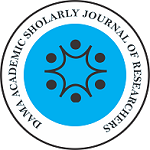Authors: A. El-Khatiba, O. M. El-Sheikha, A. A. saidb
a: Department of Botany, Faculty of Science, University of Sohag, 82534 Sohag, Egypt,
b: Department of Botany, Faculty of Science, Al-Jabal Al-Gharbi University, Libya
Abstract
Dust accumulated on the tree leaves of six common tree species in the urban area of sohag, Egypt was investigated. Morphological and chemical composition of the dust particles were analyzed using a high resolution scanning electron microscope equipped with an energy-dispersive X-ray analyzer (HRSEM/EDX) and atomic absorption spectrophotometer. Also, their magnetic properties were studied. Results showed that the shape of dust particles is sphere, ovoid, irregular or grouped into aggregates. Their sizes were well within the range of urban dust, especially that hazardous for public health (PM 2.5 and PM10). The particles enriched by Fe (iron oxides), Al and silicates, with varying concentrations of elements, including Mg, K, Ca, Na, Ti, V and Zn, Pb, Cd besides C and O2. The investigated particles exhibited variations in their magnetic properties (IRM and SIRM) depending on their chemical composition, especially iron. The close correlation between magnetic susceptibility and elements concentration makes it possible to use the magnetic technique as a non-destructive and time-efficient tool for biomonitoring of the atmospheric dust pollutants.
Keywords: IRM, SIRM, Heavy metals, Ferromagnetic, Spherules, PM

